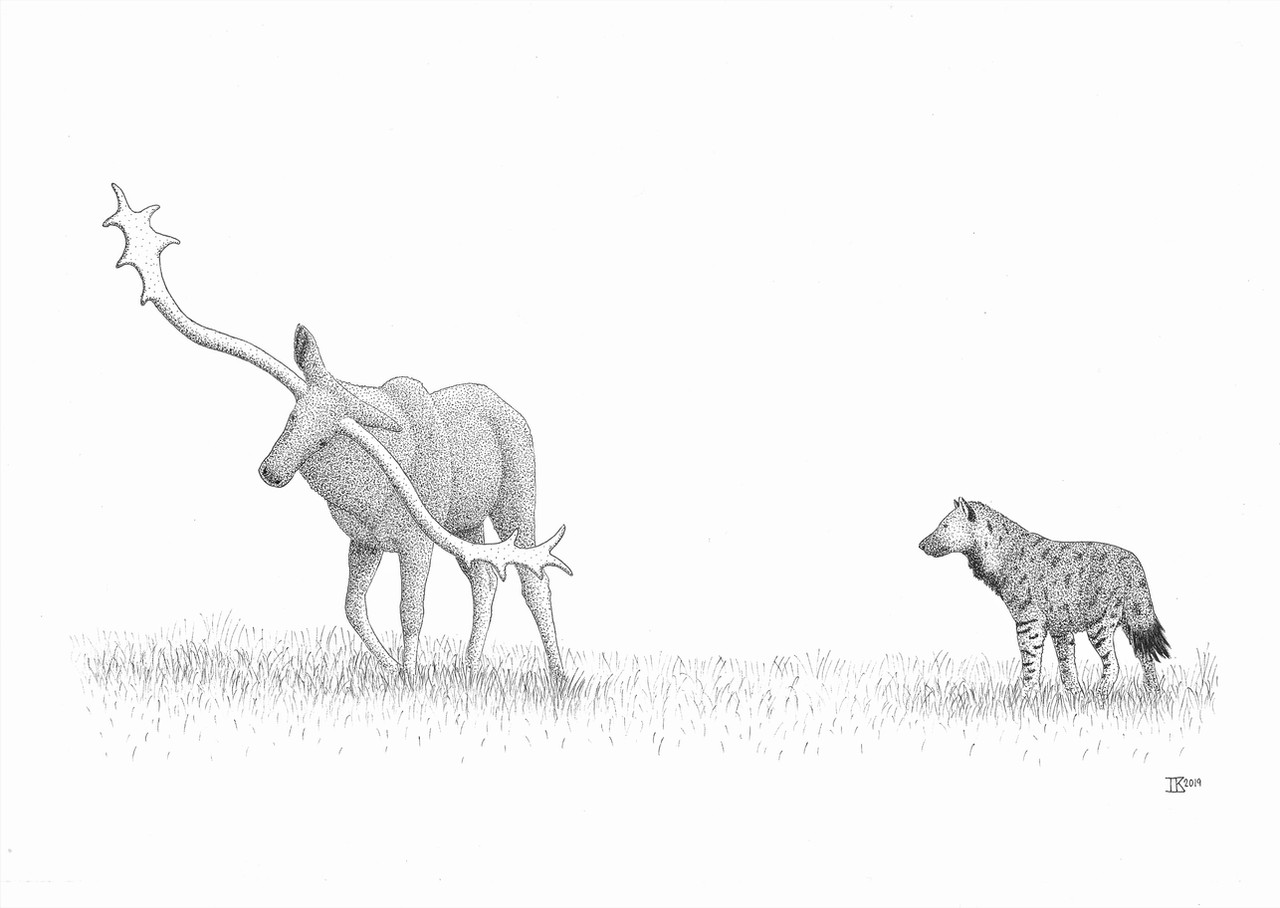HOME | DD
 Ictonyx — Libralces gallicus and Chasmaporthetes lunensis
Ictonyx — Libralces gallicus and Chasmaporthetes lunensis

#deer #drawing #europe #hyaena #hyena #ink #moose #palaeoart #paleoart #sciart #stipple #stippled #stippling #chasmaporthetes #pliocene #cervalces #libralces
Published: 2020-01-11 10:55:23 +0000 UTC; Views: 3671; Favourites: 87; Downloads: 2
Redirect to original
Description
A scene from the European Pliocene - the deer Libralces gallicus wards off a curious dog-like hyaena, Chasmaporthetes lunensis.Libralces (or Cervalces) gallicus was a large deer related to the living moose. It was about 150 cm at the shoulder and perhaps around 300 kg - comparable in size to a living wapiti. It probably had not evolved the distinctive drooping muzzle of modern moose. The antlers of Libralces were extremely long, laterally projecting and terminated in a relatively small palmation.
Chasmaporthetes lunensis was a large hyaena, comparable in size to the living spotted hyaena - about 80 cm at the shoulder and maybe 50 kg or thereabouts. In comparison to the spotted hyaena, the skull was smaller and less robust and the dentition was more generalised, without the bone-crushing specialisations of the spotted hyaena. The hind limbs were relatively longer than those of the spotted hyaena and the back less sloping. The overall shape of Chasmaporthetes might have resembled a wolf more closely than a spotted hyaena, and it is generally thought that it would have had dietary behaviour like that of a large canid, in contrast to the bone-eating adaptations seen in the large living hyaenas (spotted, brown, and striped).



























